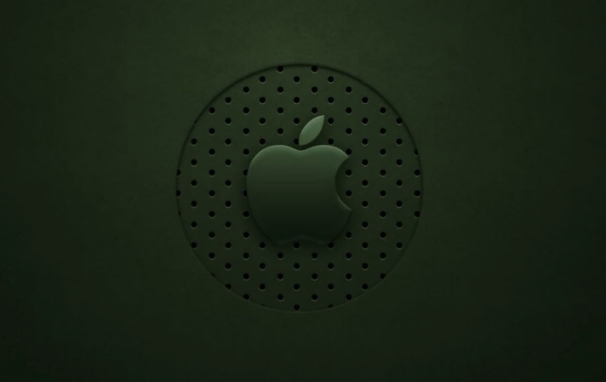 Computer Tutorials
Computer Tutorials
 System Installation
System Installation
 How to fix 'No packages were eligible for install' for macOS?
How to fix 'No packages were eligible for install' for macOS?
How to fix 'No packages were eligible for install' for macOS?
Jul 22, 2025 am 01:55 AMThe "No packages were eligible for install" error on macOS typically results from version incompatibility, incorrect installer type, or a corrupted installer file. 1. Ensure the installer matches your macOS version by checking compatibility details and downloading the latest version if needed. 2. Confirm you are using the correct installer type (.pkg, .dmg, .app) and that it matches your Mac's architecture (Apple Silicon or Intel). 3. Try installing via Terminal with verbose output to identify specific issues such as authorization problems or missing dependencies. 4. Re-download the installer from an official source if the file is corrupted or incomplete, verifying checksums or digital signatures when possible. Addressing any of these issues should resolve the error.

If you're seeing the error "No packages were eligible for install" on macOS when trying to install a package or update software, it usually means that the installer couldn't find any compatible items to install. This often happens with command-line tools, configuration profiles, or enterprise-level deployments. Let's break down what can cause this and how to fix it.

Check if the Installer Matches Your macOS Version
One of the most common reasons for this error is that the installer package isn’t built for your specific macOS version. For example, trying to install a tool designed for macOS 12 on macOS 13 might not work properly.

- Go back to the source where you downloaded the installer and check the compatibility info.
- Look for something like “Requires macOS Ventura 12.4 or later” or similar.
- If you’re unsure, try downloading the latest version from the official website or App Store.
Sometimes, even small version mismatches (like between minor updates) can cause issues, especially with system extensions or kernel-level tools.
Make Sure You’re Using the Right Installer Type
macOS supports several types of installers: .pkg, .dmg, .app, and sometimes .mpkg. The "No packages were eligible" message can pop up if you're trying to run an unsupported format or one that doesn’t match your system architecture (Apple Silicon vs Intel).

- Double-check whether the file you’re trying to install is actually meant for macOS.
- Avoid opening
.pkgfiles directly in Terminal unless necessary—try double-clicking them instead. - If you're installing via Terminal using
installercommands, make sure the path is correct and the file is executable.
Also, some older .pkg installers were built only for Intel Macs and may not run correctly on Apple Silicon without Rosetta being installed or enabled.
Try Installing via Terminal with Verbose Output
If you’re comfortable with the command line, running the installer with verbose output can help pinpoint why it’s failing:
sudo installer -verbose -pkg /path/to/your.pkg -target /
This will show more detailed logs than the standard GUI installer. Look for messages like:
- "Not authorized"
- "Incompatible OS"
- "Missing dependencies"
You can also use the pkgutil --expand command to inspect the contents of the .pkg file and see what requirements it has.
Re-download or Get a New Installer File
Sometimes, the package itself might be corrupted or incomplete, especially if you downloaded it from a third-party site or had a failed download.
- Delete the current installer and re-download it from the official source.
- Verify checksums or digital signatures if available.
- If you're getting it through an internal IT portal, ask your admin for a fresh copy.
Corrupted installers won’t unpack properly, and macOS won’t recognize them as valid installation packages.
Basically, that’s it. The error usually comes down to version mismatch, wrong installer type, or a broken file. Fixing one of those should get things moving again.
The above is the detailed content of How to fix 'No packages were eligible for install' for macOS?. For more information, please follow other related articles on the PHP Chinese website!

Hot AI Tools

Undress AI Tool
Undress images for free

Undresser.AI Undress
AI-powered app for creating realistic nude photos

AI Clothes Remover
Online AI tool for removing clothes from photos.

Clothoff.io
AI clothes remover

Video Face Swap
Swap faces in any video effortlessly with our completely free AI face swap tool!

Hot Article

Hot Tools

Notepad++7.3.1
Easy-to-use and free code editor

SublimeText3 Chinese version
Chinese version, very easy to use

Zend Studio 13.0.1
Powerful PHP integrated development environment

Dreamweaver CS6
Visual web development tools

SublimeText3 Mac version
God-level code editing software (SublimeText3)
 Where is the pycharm interpreter?
May 23, 2025 pm 10:09 PM
Where is the pycharm interpreter?
May 23, 2025 pm 10:09 PM
Setting the location of the interpreter in PyCharm can be achieved through the following steps: 1. Open PyCharm, click the "File" menu, and select "Settings" or "Preferences". 2. Find and click "Project:[Your Project Name]" and select "PythonInterpreter". 3. Click "AddInterpreter", select "SystemInterpreter", browse to the Python installation directory, select the Python executable file, and click "OK". When setting up the interpreter, you need to pay attention to path correctness, version compatibility and the use of the virtual environment to ensure the smooth operation of the project.
 The difference between programming in Java and other languages ??Analysis of the advantages of cross-platform features of Java
May 20, 2025 pm 08:21 PM
The difference between programming in Java and other languages ??Analysis of the advantages of cross-platform features of Java
May 20, 2025 pm 08:21 PM
The main difference between Java and other programming languages ??is its cross-platform feature of "writing at once, running everywhere". 1. The syntax of Java is close to C, but it removes pointer operations that are prone to errors, making it suitable for large enterprise applications. 2. Compared with Python, Java has more advantages in performance and large-scale data processing. The cross-platform advantage of Java stems from the Java virtual machine (JVM), which can run the same bytecode on different platforms, simplifying development and deployment, but be careful to avoid using platform-specific APIs to maintain cross-platformity.
 How to stop Microsoft Edge automatic updates
May 21, 2025 am 10:12 AM
How to stop Microsoft Edge automatic updates
May 21, 2025 am 10:12 AM
How to stop Microsoft Edge Automatically Update Microsoft Edge is the default browser that comes with Windows 11. Earlier, the Edge browser received updates as the Windows operating system was updated. However, the Edge browser based on Chromium has changed that. The browser will now automatically update in the background without your knowledge. In this article, we will explain how to stop automatic Microsoft Edge updates in Windows 11 and macOS. Related: How to disable automatic updates in Google Chrome? Check for automatic edge updates Chromium-based Edge vs. Goo based on Chromium backend code
 Commands and configurations for starting Apache service in macOS system
May 16, 2025 pm 10:00 PM
Commands and configurations for starting Apache service in macOS system
May 16, 2025 pm 10:00 PM
The command to start the Apache service on macOS is sudoapachectlstart, and the configuration file is located in /etc/apache2/. The main steps include: 1. Edit the httpd.conf file, modify the Listen port such as Listen8080; 2. Adjust the DocumentRoot path to the personal directory such as /Users/your_username/Sites, and update the corresponding permission settings; 3. Use the sudoapachectlgraceful command to restart Apache to ensure that the configuration takes effect; 4. Enable the mod_deflate module to compress data to improve page loading speed.
 MySQL installation tutorial teach you step by step the detailed steps for installing and configuration of mySQL step by step
May 23, 2025 am 06:09 AM
MySQL installation tutorial teach you step by step the detailed steps for installing and configuration of mySQL step by step
May 23, 2025 am 06:09 AM
The installation and configuration of MySQL can be completed through the following steps: 1. Download the installation package suitable for the operating system from the official website. 2. Run the installer, select the "Developer Default" option and set the root user password. 3. After installation, configure environment variables to ensure that the bin directory of MySQL is in PATH. 4. When creating a user, follow the principle of minimum permissions and set a strong password. 5. Adjust the innodb_buffer_pool_size and max_connections parameters when optimizing performance. 6. Back up the database regularly and optimize query statements to improve performance.
 Which is better, uc browser or qq browser? In-depth comparison and evaluation of uc and qq browsers
May 22, 2025 pm 08:33 PM
Which is better, uc browser or qq browser? In-depth comparison and evaluation of uc and qq browsers
May 22, 2025 pm 08:33 PM
Choosing UC browser or QQ browser depends on your needs: 1. UC browser is suitable for users who pursue fast loading and rich entertainment functions; 2. QQ browser is suitable for users who need stability and seamless connection with Tencent products.
 How to update the system's own software
May 19, 2025 pm 06:48 PM
How to update the system's own software
May 19, 2025 pm 06:48 PM
Updating the software that comes with macOS is simple and important because it can fix bugs, improve performance, bring new features and security improvements. You can update through the "Software Update" option in "System Settings" or "System Preferences" and follow the prompts. If you encounter problems, try restarting your Mac or checking your network connection, and the Apple Support page also provides a solution. It is recommended to keep the system up to date, back up data before update, and ensure Wi-Fi and sufficient storage space. Update details can be viewed on Apple's official website.
 How to adjust screen brightness on macOS
May 16, 2025 pm 08:39 PM
How to adjust screen brightness on macOS
May 16, 2025 pm 08:39 PM
Adjusting screen brightness on macOS can be fine-tuned using the brightness adjustment keys on the keyboard or through system preferences. 1. Press the Sun icon keys on the F1 and F2 keys to quickly adjust the brightness. 2. Drag the slider in the "Display" option in "System Preferences" to make minor adjustments. 3. Enable the "Auto-adjust brightness" function to make the brightness change with the ambient light. 4. Use the "Night View" mode to reduce blue light to protect your eyes. 5. Developers can use AppleScript to automate brightness adjustments.





